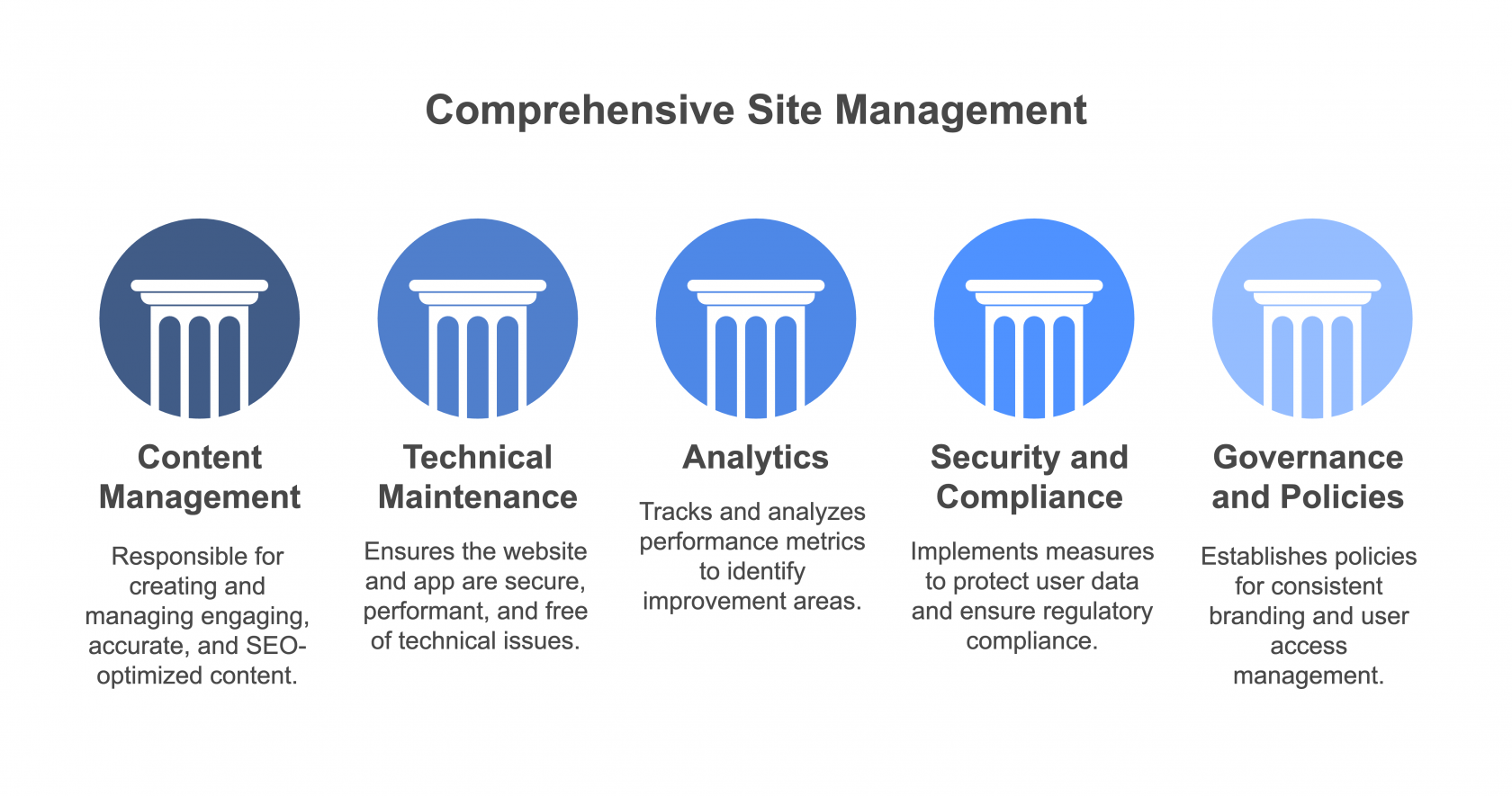Responsibilities for customer experience and site management plan
A comprehensive site management plan ensures a positive customer experience across all digital touchpoints. Here's a breakdown of key responsibilities:
I. Customer Experience (CX) Responsibilities
 1. Customer Journey Mapping and Optimization:
1. Customer Journey Mapping and Optimization:
- Responsibility: Understanding and improving the customer journey across all digital channels.
-
Tasks:
- Map the customer journey to identify key touchpoints and potential pain points.
- Analyze customer behavior and feedback to identify areas for improvement.
- Optimize website and app navigation, content, and functionality.
- Ensure a seamless and consistent experience across all devices.
2. Personalization and Customization:
- Responsibility: Tailoring content and experiences to individual customer preferences.
-
Tasks:
- Use data to personalize website content, product recommendations, and offers.
- Implement dynamic content based on user behavior and demographics.
- Segment audiences to deliver targeted messages and promotions.
3. Customer Feedback and Monitoring:
- Responsibility: Gathering and analyzing customer feedback to improve CX.
-
Tasks:
- Implement feedback mechanisms (surveys, reviews, social listening).
- Monitor online conversations and brand mentions.
- Analyze feedback to identify trends and patterns.
- Address customer concerns and issues promptly.
4. Customer Support and Communication:
- Responsibility: Providing timely and effective customer support across all channels.
-
Tasks:
- Manage customer inquiries and complaints through email, chat, and social media.
- Develop and maintain a knowledge base and FAQ section.
- Ensure consistent and helpful communication.
5. Accessibility and Usability:
- Responsibility: Ensuring that the website and app are accessible and usable for all users.
-
Tasks:
- Comply with accessibility standards (WCAG).
- Conduct usability testing to identify and address potential issues.
- Ensure that content is easy to understand and navigate.
II. Site Management Plan Responsibilities
- Responsibility: Creating, publishing, and managing website content.
-
Tasks:
- Develop a content calendar and editorial guidelines.
- Create high-quality, relevant, and engaging content.
- Ensure content is accurate, up-to-date, and optimized for search engines (SEO).
- Use a content management system (CMS) to streamline content creation and publishing.
2. Technical Maintenance and Optimization:
- Responsibility: Ensuring the website and app are technically sound and optimized for performance.
-
Tasks:
- Monitor website performance and identify technical issues.
- Ensure website and app are secure and protected from cyber threats.
- Optimize website speed and performance.
- Manage website hosting and domain registration.
3. Analytics and Reporting:
- Responsibility: Tracking and analyzing website and app performance.
-
Tasks:
- Implement analytics tools (Google Analytics, etc.).
- Track key performance indicators (KPIs) such as traffic, conversion rates, and engagement metrics.
- Generate regular reports to summarize performance and identify areas for improvement.
4. Security and Compliance:
- Responsibility: Ensuring that the website and app comply with relevant regulations and security standards.
-
Tasks:
- Implement security measures to protect user data.
- Ensure compliance with privacy regulations (GDPR, CCPA, etc.).
- Monitor and address security vulnerabilities.
5. Site Governance and Policies:
- Responsibility: Establishing and enforcing site governance policies and procedures.
-
Tasks:
- Develop and maintain website policies and guidelines.
- Ensure consistency in branding and messaging.
- Manage user access and permissions.
By clearly defining and assigning these responsibilities, organizations can create a positive customer experience and effectively manage their digital presence.


No Comments